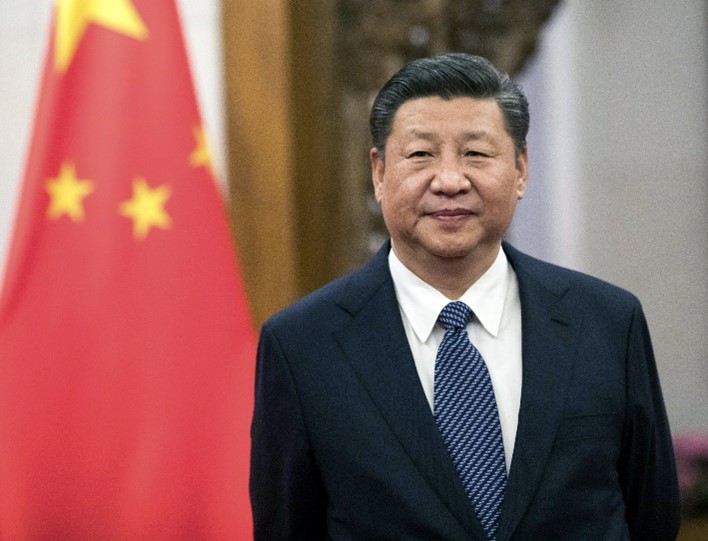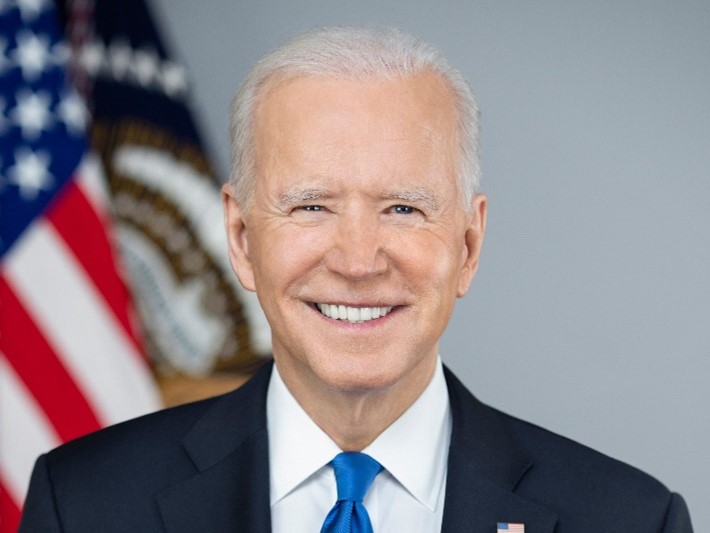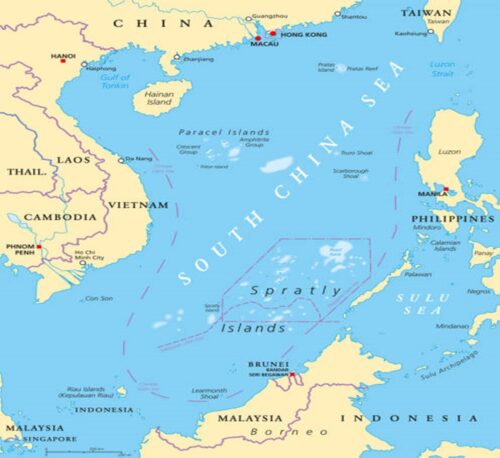
Why are Pakistan’s Fortunes Running in Circles? What Is the Way Forward?
February 23, 2024
Uzbekistan, The Emerging Economic Powerhouse of Central Asia
February 24, 2024
Why are Pakistan’s Fortunes Running in Circles? What Is the Way Forward?
February 23, 2024
Uzbekistan, The Emerging Economic Powerhouse of Central Asia
February 24, 2024Ambassador Syed Hassan Habib
Is China Heading Towards War?
The world is changing at a fast pace. The prevailing power structures are crumbling, and political leaders across the globe are frequently recalibrating their policies. A new force is emerging to pose a serious threat to the lone superpower, which has academicians and researchers pondering; is China walking into a war?
Recently, the metaphor "the Thucydides trap" has been extensively used to explore the relationship between the rising power, China, and the lone superpower, the USA. Citing classical examples, the most likely scenario could be a war. This could likely happen intentionally (provocations), as in the Russian invasion of Afghanistan (1979), or through any accident, like the assassination of Archduke Ferdinand at the start of World War 1. This is a dangerous assumption that relies too heavily on history. President Xi Jinping himself refuted the idea of the so-called "Thucydides Trap in the World."
CURRENCY GAME
Attention has become focused on China’s role in securing the deal between Saudi Arabia and Iran to re-establish diplomatic relations, which was truly a great success. Another recent deal, that was less in the spotlight, was between China National Offshore Oil Corporation (CNOOC) and France's TotalEnergies for the first ever yuan-settled energy deal involving 65,000 metric tons of Emirati liquefied natural gas. Iraq, Saudi Arabia, Iran, Russia, Brazil, and others are ready to deal in Chinese yuan (CNY). China is also involved in technology transfers that worry the US more than currency swaps.
With the emerging trading alignment among China, Russia, and Iran, all of which avoid US sanctions and the dollar, other nations from the Middle East, Africa, and Asia — India, Pakistan, Saudi Arabia, Iraq, Syria, South Africa, etc.—are also receptive to deals in alternative currencies. That’s a sizeable market for the US to defend. This is happening with the rise of independent leaders in the Third World. Currently, experts are divided on how increased CNY-denominated trade in the Middle East and elsewhere poses a serious threat to the US dollar’s role as an international reserve currency. Due to state controls, the CNY does not match the global liquidity of the dollar. During 2022, on major financial transactions, the US dollar accounted for 96% of world trade, while the CNY was 2%.
The currency war on the digital front is more severe. While Bitcoin lost 60% of its value and the FTX collapsed, China is seizing the initiative in Web3 block chain technologies and token-based economics. The United States may not be keeping pace with Chinese moves in the digital economy.
The Middle East, remains a hub and even an incubator for FinTech. Although still in its infancy, growth in the Islamic FinTech market, currently at $79 billion, is expected to increase by 18% annually, with the top six countries in it being Saudi Arabia, Iran, Malaysia, the UAE, Turkey, and Indonesia. Together, they account for 81% of the total market size. The dollar’s influence on the digital future is at stake. The CNY impact is gradual now, but with time, it could turn into a shock.
THE GEOPOLITICS


The power centers are shifting towards the Pacific, with the US pursuing new allies and forming associations. Meanwhile, China is shifting its focus towards the Middle East, Africa, some European and South American countries. China is aware that it will have no future if it remains only a geo-economic power. It is rapidly increasing its military capability and trying to reclaim some space.
China is resilient enough and will not tolerate any interference in its core areas, namely Tibet, Xinjiang, and the South China Sea. The Chinese leadership is fully aware of historic errors by other nations and will pursue a national policy whereby its resources and economic development are protected by a credible modern military force to avoid falling into the Polybius Trap. China is not looking for a patron.
The US policies reform or change after each election, but the Chinese direction is almost permanent. The stalked Russian invasion of Ukraine has emboldened the US, which will apply the same tactics against China. The nature and engagement of both countries are entirely different.
Of all the disputes, such as those in Xinjiang, Tibet, and the South China Sea, the one in the South China Sea has the greatest potential to turn into a full scale war. All the regional players are militarily dependent on the US. This will ultimately be a direct confrontation between the US and China. China may be using both its ground based and naval assets, while the US will solely rely on its naval strength.
THE SOUTH CHINA SEA
The SCS is a semi-enclosed area in Southeast Asia bordering eleven countries. The hydrocarbon resources in the region are extremely important to all the states bordering it. In addition to the proven 11 billion barrels of oil and 190 trillion cubic feet of natural gas, there are estimated to be many more undiscovered reserves in the SCS. With the Strait of Malacca, the region is one of the most important trade routes. In addition to a large fishing area, more than 50% of annual global trade, one-third of crude oil, and more than half of liquefied natural gas (LNG) transport pass through the region. The SCS is contested by the littoral states with a set of overlapping sovereignty claims. Importantly, in the Paracel and Spratly Islands, international efforts to determine the status of the islands have not yielded positive results due to certain ambiguous criteria contained in the United Nations Convention on the Law of the Sea (UNCLOS). Since the 1990s, the conflict has become more complex due to the economic interests of the claimants and the Sino-American rivalry in the Asia-Pacific region.

CHINA’S STRATEGY IN THE SOUTH CHINA SEA
China's strategic interests in the SCS arise from surging nationalism, greater economic independence, internal political stability, and the need for sustained development. China's appetite for energy has increased since the country became a net importer of oil in 1993. China claims nearly 80–90% of the total area through the maritime demarcation line, the Nine-Dash Line, which overlaps areas claimed by its neighbors. With its historically based claims, China seeks to preserve its "sovereign rights," such as fishing and shipping.
China's military spending has been steadily increasing over many years. While total military spending in Southeast Asia (2010–2019) increased from $29.7 billion to $40.5 billion, China's military spending increased from $143.9 billion to $266.4 billion.
Beijing, like other actors, has begun naval modernization. To enforce its maritime claims, Beijing conducts military exercises and sends ships and aircraft to the disputed areas. It also imposes unilateral fishing bans, watch US vessels, monitor international navigation, and inters with oil exploration vessels. The construction of artificial islands on the reefs of the Spratly and Paracel Islands, the establishment of administrative control over areas like Sansha City on Woody Island, and military infrastructure on several reefs such as Fiery Cross Reef and Johnson South Reef draw strong criticism from the neighbors. The new military installations and radar enable China to effectively control the contested waters.
DIPLOMATIC EFFORTS
China's diplomatic posture is fairly offensive. During the last decade, Beijing has extended diplomatic efforts in the form of cooperative and dispute settlement mechanisms and joint development to ease tensions with Southeast Asian countries, showing its intention to solve the problem peacefully. Beijing has participated in several bilateral and multilateral arrangements, such as the ASEAN-China Code of Conduct (COC), Sino-Malaysian and China-Vietnam Joint Development, and the China-Philippines MOU. Beijing assured its firm support for ASEAN's centrality in regional affairs. But some have doubts about whether China is acting in good faith, considering its rejection of the previous International Court Tribunal ruling and viewing the talks as a coercion attempt combined with inducements.
China's claims in the SCS dispute are nothing new; they have existed for centuries but have been strongly supported as the country's regional and global position has grown. China's military buildup has security-seeking implications in the face of interference from the United States.
China has pursued an increasingly aggressive foreign-policy posture known as "wolf warrior" diplomacy, one that has forcefully staked China’s positions across issues and regions. At heart, Xi’s diplomacy calls for a more active role for China as a great power on the world stage aimed at reforming the Western-dominated international order.
The key characteristics of China’s foreign policy are: reactions to inquiries into COVID-19’s origin, strong posture in the SCS, firm stand on border disputes, and projecting military might in the Taiwan Strait.
At the 20th Party Congress, President Xi stated that "China’s international influence, appeal, and shaping power have been significantly improved." Xi advocated for Taiwan's "peaceful reunification" but vowed not to renounce the use of force. Critics state that as China grows increasingly authoritarian under Xi, the sources of soft power—civil society, individuals, and the private sector—inevitably suffer.
US ALLIANCES IN ASIA
The US perception of security leadership has taken a serious hit in the last four years. NATO is not geared towards China; only France and the UK are ready to show solidarity in the SCS. The QUAD consisting of the US, India, Japan, and Australia is still in nascent form.
In a renewed attempt, the US is expanding its military presence in Asia, aimed at countering Beijing and reassuring Indo-Pacific allies that it will stand with them against threats from China. The US actions stretch from Japan to the Solomon Islands. The US is more involved in advanced military exercises and troop rotations in key areas of the Taiwan Strait and South China Sea. It is also ready to provide logistical support in a possible conflict with China, specifically with Taiwan.
The January 2023 saw new understanding with the Philippines, Japan and South Korea;
- In Philippines, the US secured access to four more military camps for some 500 troops military exercises, humanitarian aid, training, and other missions.
- In South Korea, the US would increase its deployment of advanced military assets, including fighter jets and aircraft carriers. The US already has some 28,000 troops and Terminally High Altitude Air Defense (THAAD), which draws criticism from China.
- Japan agreed to US troop presence on the island of Okinawa to enhance anti-ship capabilities and to construct runways on the small southern island of Mageshima to act as hubs for joint exercises, amphibious operations, and missile interception.
US allies are not on the same page in their relationships with China. They are not united with Washington on how to manage China. Beijing exploits these fissures. Apparently, China's increasing military assertiveness is reactionary against perceived threats as the littoral states are increasingly aligned with the US. The provocations in SCS are on a daily basis and chances or error are very high. The region has four declared nuclear states namely; China, Russia, North Korea and the US, plus two on the verge nuclear power South Korea and Japan. Very dangerous zone for error.
COST OF CHINA’S AGGRESSION
The costs of a military confrontation would be extremely high for the claimants, which are among China's main foreign direct investment (FDI) targets and top trading partners, making it essential to avoid further escalation of the conflict and find a peaceful solution. Beijing often complains about increasing American involvement in its region, yet it will find it difficult to directly challenge the US, which is its largest creditor and trading partner. So it makes more sense for China to preserve regional balance and avoid hostilities that can harm decades of economic gains.
The Chinese strength also bears its own weakness. Export markets are crucial to its wealth in the face of ongoing recovery, a collapsed real estate market, and an ageing population. Beijing cannot afford to cross a threshold with the West that would jeopardize its own interests—whatever the military buildup in the Taiwan Straits.
CONCLUSION
The territorial disputes are not only between China and its neighbors but also with America. At the moment, Beijing is pursuing a balanced strategy but seems unwilling to sacrifice its advantages. It is China's future moves that will determine whether there will be conflict or cooperation in the SCS. The dynamic nature of the conflict and regional power politics make it difficult to predict accurately. It can be said that China will pursue it interests through peaceful means, as the political and economic costs of a military conflict outweigh the benefits. Yet, if the level of provocation crosses the Chinese redline the chances of conflict are high.

The Author
